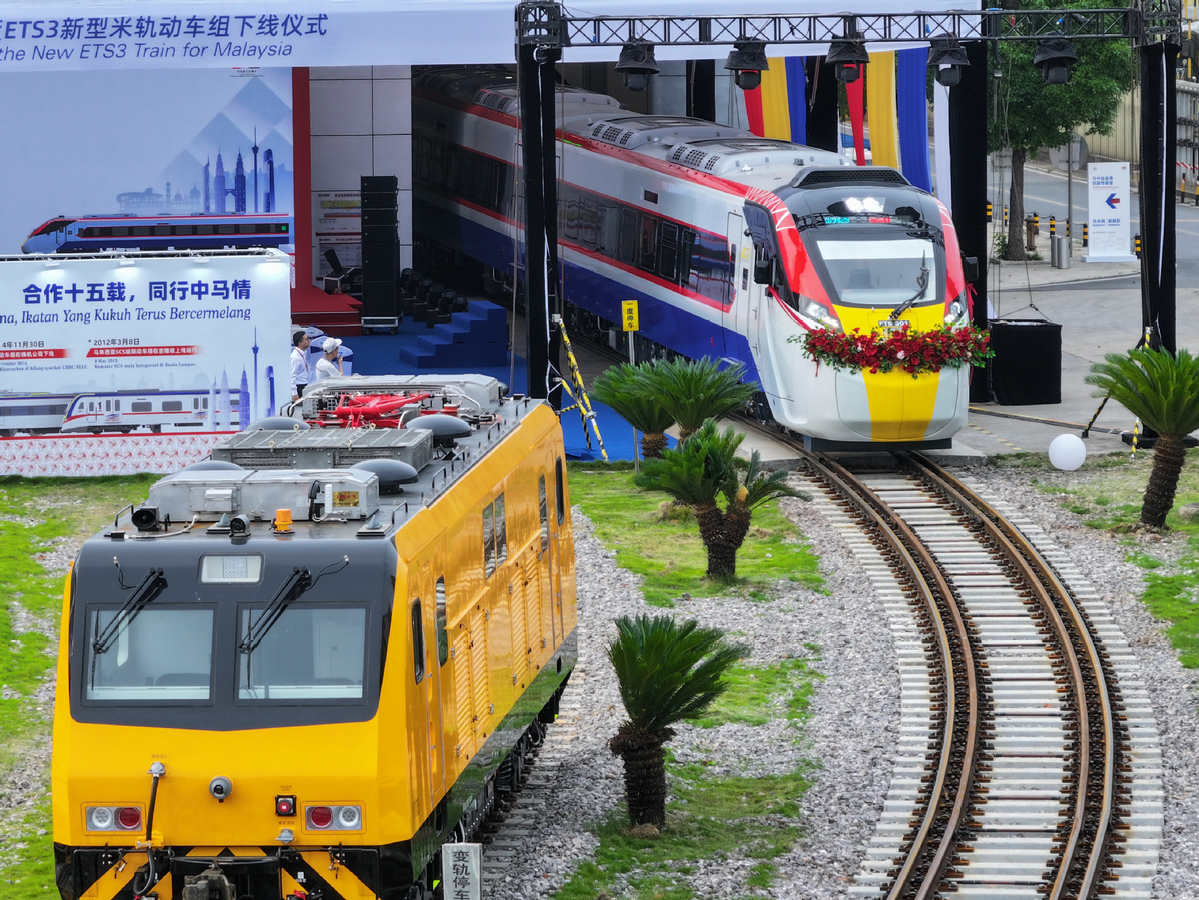
The approval of the "Policy and Measures for Accelerating the Rise of the Central Region in the New Era" by the Political Bureau of the Communist Party of China Central Committee on May 27 was a critical strategic move to ensure balanced high-quality development. The approval came in the wake of President Xi Jinping's address in March in Changsha, Hunan province, in which he underscored the need to intensify the high-quality development of the central region.
The new policy and measures not only embrace the essence of Xi's directive but also chart a new course for the central region's development, in order to increase the socioeconomic opportunities in China's six central provinces. The central region has a distinctive advantage due to its geographical location. With a large population and immense market potential, coupled with a robust scientific and technological foundation, the region is a vital corridor for integrated inland and maritime development, and is thus poised to become a powerhouse of new industrialization, urbanization, informatization and agricultural modernization.
READ MORE: Energizing of central region highlighted
Apart from being essential to expanding domestic demand and facilitating high-quality reform and opening-up, the central region plays a strategic role in smoothing domestic economic circulation and enhancing China's new economic development landscape.
The central region is not only strategically located along the Yangtze River Economic Belt and the Yellow River Ecological Corridor but also serves as the backbone of the Yangtze River Economic Belt. Accelerating the collaborative development of the six central provinces and strengthening the Yangtze River Economic Belt are essential for the coordinated growth of the entire region.
Additionally, the central region's connectivity with the Beijing-Tianjin-Hebei region to the north, the Yangtze River Delta region to the east and the Guangdong-Hong Kong-Macao Greater Bay Area to the south allows it to absorb the technological, industrial and financial spillovers from these economic hubs. That in turn will boost its overall strength and competitiveness, creating a synergistic effect that aligns regional development strategies with national priorities.
The policy and measures are part of the government's development strategy for the central region, which will facilitate the rise of the region. The measures emphasize the importance of tailoring the new quality productive forces to local conditions, accelerating modern industrial systems, and strengthening the real economy. These will help the central region to leverage its industrial, technological and human resource advantages to foster high-quality productivity.
As for the policy, it highlights the need to build a modern industrial system supported by advanced manufacturing, driven by technological innovation and underpinned by sustainable development.
Strengthening basic research in technology is a key part of the measures; and it will help Central China become a leader in industrial innovation through scientific advancement. The region is well-positioned to contribute significantly to China's realization of self-reliance in high-tech by addressing key and urgent frontier issues and exploring inter-provincial research cooperation. By consolidating the research efforts of different regions and making technological breakthroughs, the central region can help apply scientific achievements to industry so as to develop new quality productive forces and fuel high-quality development.
The policy also emphasizes the importance of ecological protection, and green, low-carbon development, which is integral to building a "beautiful central region". It involves harmonizing human and natural coexistence, a critical element of the region's strategic implementation. Improving the environmental landscape and embracing a green development model are not only strategic priorities but also necessary to ensure a sustainable future for the region.
The policy and measures will help create a wealth of opportunities for Central China. By leveraging its manufacturing prowess and realizing its new productivity potential, the region can expedite its digital transformation and bolster its core competitiveness. Industries such as equipment manufacturing, materials industry, optoelectronics, new energy and smart vehicles and green low-carbon technologies stand to benefit immensely from the development of the region. More importantly, the region's strong technological base in fields such as intelligent manufacturing, AI, supercomputing, quantum computing, new materials and biopharmaceuticals should be leveraged to foster innovation-driven growth.
ALSO READ: CPC leadership reviews measures to spur central China development
Besides, the central region's commitment to ecological protection and green development will help create beautiful cities and an ecologically balanced countryside, serving as a national model for river and lake protection.
The top leader's strategic vision for the development of Central China and the newly introduced policy and measures will steer the region toward long-term prosperity. Judging by the pace of its development, the central region is set to outpace national average growth, capitalizing on its industrial and technological advantages to create exemplars of new quality productive forces. This will facilitate the establishment of a modern industrial system led by advanced manufacturing, strengthen the unified domestic market, and drive domestic circulation.
Cities such as Zhengzhou, Wuhan, Changsha and Hefei are expected to enter the ranks of new first-tier cities, attracting significant investment and talents, and creating more opportunities. Through continuous reform and opening-up, the central region will transform itself into a vibrant socioeconomic hub, laying the foundation for China's modernization and high-quality development, and emerging as a pillar of the country's high-quality economic growth.
The author is the director of Modern Economics Research Center, Huazhong University of Science and Technology.
The views don't necessarily reflect those of China Daily.


